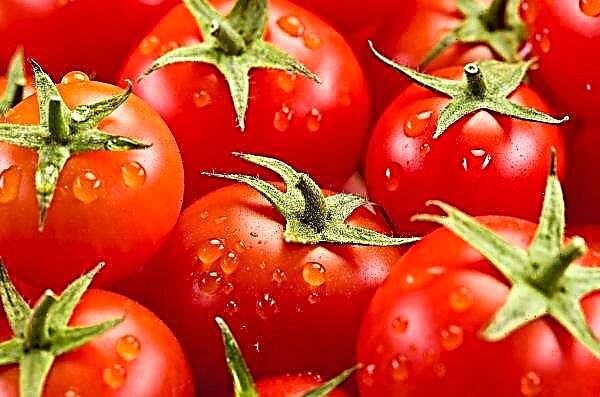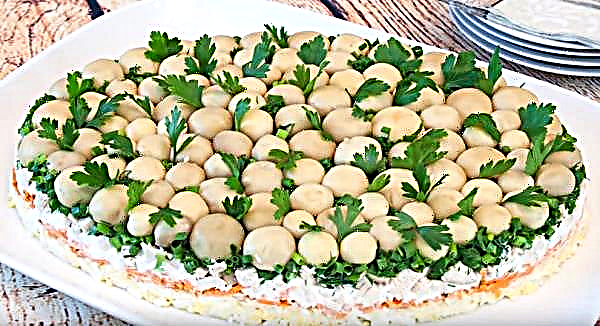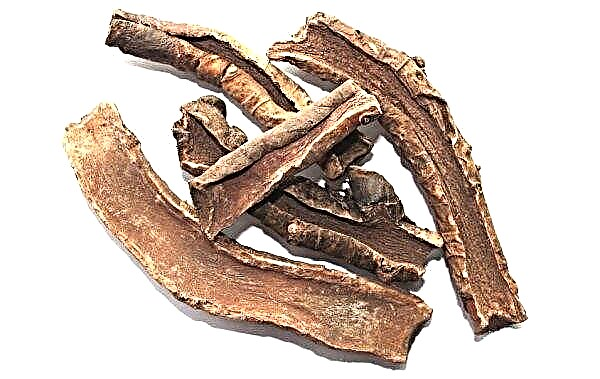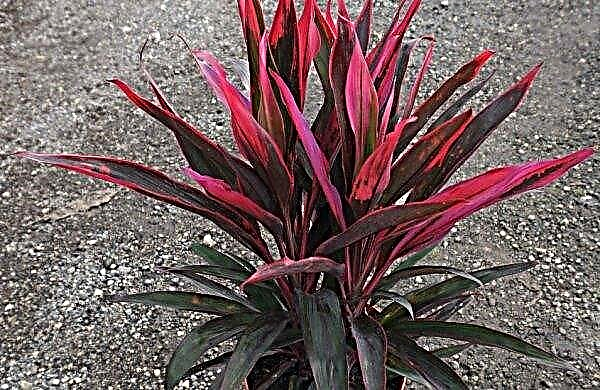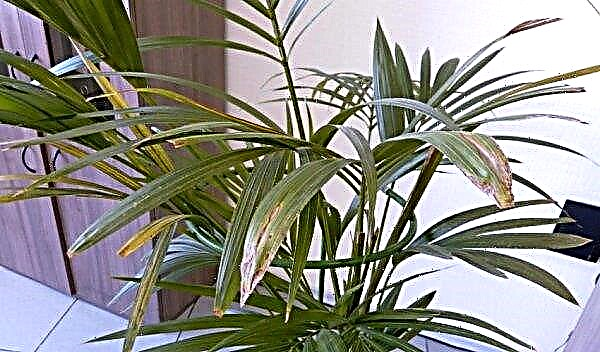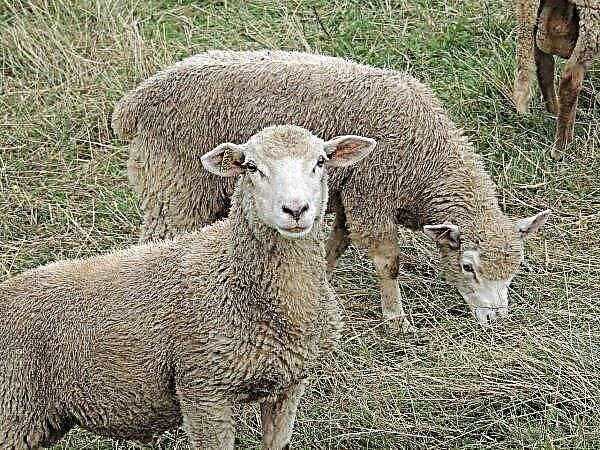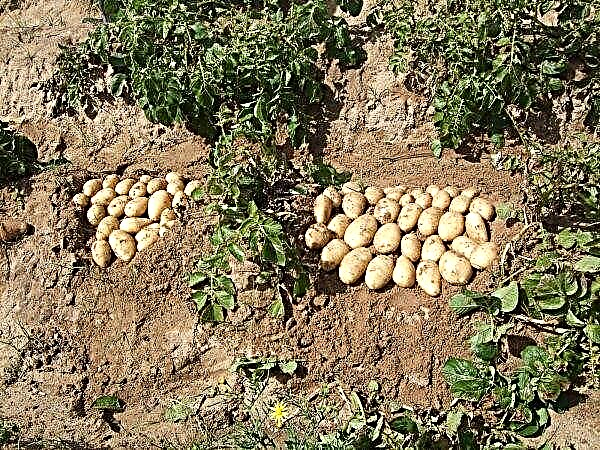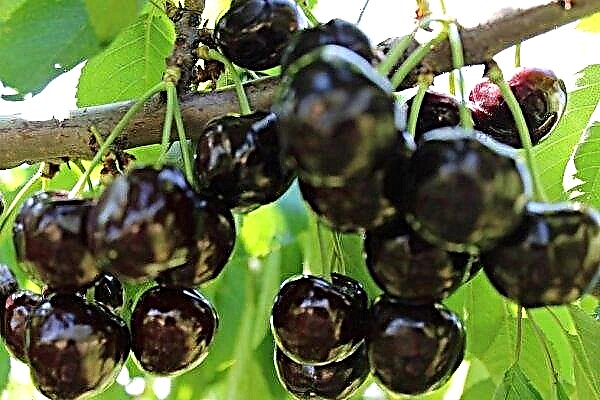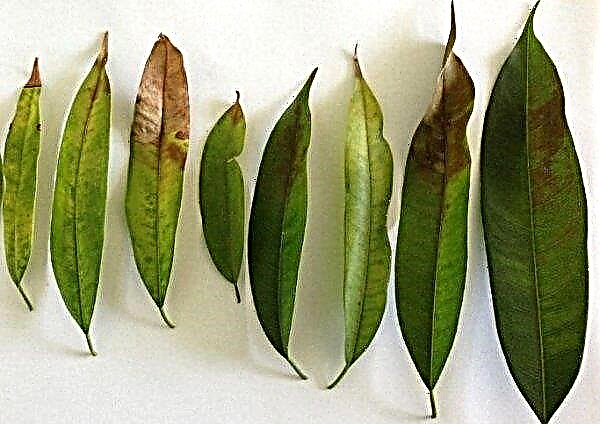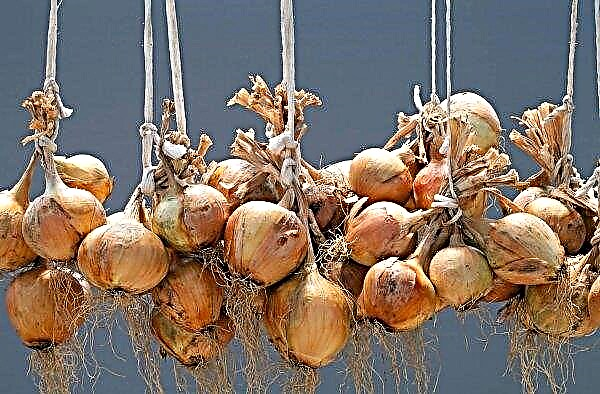Sweet pepper ranks third among the most popular vegetable crops on personal plots. Many gardeners are trying to choose classic, undemanding varieties with a high level of yield and excellent taste. It is these characteristics that Belozerka pepper has, which made it one of the most common varieties in vegetable gardens - this will be discussed in the article.
Variety selection and characterization
Pepper Belozerka was introduced in 1991 in Transnistria and was originally called Lumina. In 1995, this hybrid was included in the State Register of the Russian Federation. Due to its characteristics, Belozerka stubbornly tolerates a different climate, which makes it possible to grow this pepper in various regions. A high level of productivity does not change either on open ground or in greenhouse conditions.
Did you know? The homeland of sweet pepper is considered Central and South America.
The fruits of this variety differ in the following indicators:
- conical shape with a pointed end;
- pepper green during the period of technical maturity and yellow or red during the biological period;
- glossy surface with two faces;
- pepper mass - up to 150 g;
- dense, juicy pulp with a pronounced sweet taste;
- wall thickness - 0.5–0.7 mm.
Taste indicators allow you to use this variety both fresh and in cooking and preserving, preserving the sweetness of the pulp and a large number of vitamins C. Vegetation of Belozerka lasts 110–125 days. The root and main stem are strong and well developed. The bush does not exceed 70 cm in length and has many saturated green leaves. The yield of one bush is about 8 kg. Pepper of this variety has a high keeping quality and stable immunity to various diseases.
Advantages and disadvantages
- This variety, due to its characteristics, has many advantages:
- High yield.
- Uniformity of fruit size.
- Excellent taste characteristics even at the stage of technical maturity.
- Resistance to weather conditions.
- Prolonged fruiting.
- Immunity to most fungal and viral diseases.
- The disadvantages of Belozerka are minimal:
- Not so much mass and wall thickness of the fetus in comparison with modern hybrids.
- Some difficulties in the germination of seeds and seedlings in the middle climate.
Growing seedlings at home
A rich harvest in the future directly depends on the selected seeds and properly grown seedlings. That is why you should use some recommendations.
The timing
Depending on the chosen method of growing pepper, the timing of sowing seeds for seedlings will vary:
- if grown in greenhouses, pepper is sown since mid-February;
- when grown on open soils, the material is sown in the last week of February or the first week of March.
Did you know? To get the daily intake of vitamin C, it is enough to eat 40 g of pepper.
The soil
For good seedlings, it is recommended to introduce some variety into the basic composition of the soil. The best option is 40% of the land, 30% humus and 30% sand, or add three equal parts of peat, humus and sand to the ground. Also, immediately before sowing the seeds, it is necessary to disinfect the soil, which will help protect the pepper from unwanted infection with various fungal infections. For this, the prepared soil is infused with boiling water.
Capacity
In the process of preparing seeds for sowing, one of the main issues is the choice of capacity in which seedlings will grow and develop in the future.
Consider the most popular options:
- Seedling Boxes - it is very convenient to use such containers, since all plants are in one place, and if necessary, such a box can be easily and quickly moved to another place, or turned to the light. The disadvantages of this solution include the need for thinning and picking in separate containers, which is extremely undesirable for pepper, which has a core rhizome.
- Peat pills - are compressed peat tanks, which include various nutrients. In addition to the mass of advantages (lack of the need for picking, ease of use) of this option, there are some disadvantages, including a rather high cost, the need for a stable level of humidity and the lack of the possibility of reuse.
- Plastic cups - practical containers that do not require additional costs. The only thing to remember is the need for drainage holes, which are needed for the outflow of water.
Important! In view of the developed root system of pepper of this variety, in order to avoid injury to the rhizome, loosening must be carried out extremely carefully.
Seed selection and preparation
An important condition for obtaining strong, healthy plants in the beds and, as a result, a rich harvest is the correct approach to the selection of seeds. In your preferences, you need to focus solely on proven sources of sales. A significant effect on the optimality of future seedlings has an expiration date. Before buying, you should pay attention to the collection date - the maximum storage period for sweet pepper seeds is 3 years.
Next, all seeds are checked for voids - for this they are immersed in salted water for 20-30 minutes. Seeds that float to the surface are discarded. The rest of the planting material is soaked in a weak solution of potassium permanganate for 20 minutes, after which it is thoroughly washed and dried - this will disinfect the seeds and eliminate viruses and infections that may be contained inside the seeds. It is also recommended that they be treated with any stimulant according to the instructions. To quickly grow seedlings and get healthier shoots, the seeds are germinated before planting in the ground. Seeds should be placed in any fabric made from natural fibers previously moistened with water. The optimum air temperature should be at least + 25 ° C, the humidity of the fabric must be maintained with a spray gun. During the first week, the first shoots appear - as soon as their length reaches 2 mm, the seeds can be sown.
To quickly grow seedlings and get healthier shoots, the seeds are germinated before planting in the ground. Seeds should be placed in any fabric made from natural fibers previously moistened with water. The optimum air temperature should be at least + 25 ° C, the humidity of the fabric must be maintained with a spray gun. During the first week, the first shoots appear - as soon as their length reaches 2 mm, the seeds can be sown.
Sowing seeds
It is worth noting that this variety of pepper does not respond well to transplanting, so it’s better to use small containers with a diameter of about 8 cm for seedlings. from the soil. All containers are put on a pallet and covered with a film or glass - until the first shoots appear, after which the film is removed. The optimum temperature regime will be the range of +23 ... + 25 ° С.
Seedling Care
Sprouts are placed in places with a lot of natural light, avoiding direct sunlight. For the full formation of glasses with seedlings daily turn to the light on the other side. It is necessary to protect the first sprouts from temperature extremes and the presence of drafts. Watering is carried out 1 time in 3 days. After the formation of three full leaves, seedlings are recommended for the first time to feed. To do this, use a solution of 5 l of water, 15 g of superphosphates and 5 g of potassium fertilizer. After the formation of five leaves (after about 2 weeks), the seedlings are fertilized again using the same top dressing, but with a doubled concentration of nutrients.
After the formation of three full leaves, seedlings are recommended for the first time to feed. To do this, use a solution of 5 l of water, 15 g of superphosphates and 5 g of potassium fertilizer. After the formation of five leaves (after about 2 weeks), the seedlings are fertilized again using the same top dressing, but with a doubled concentration of nutrients.
Seedling hardening
Pepper refers to heat-loving plants and, with all its unpretentiousness, is keenly sensitive to worsening weather conditions. To develop resistance to climate change, seedling hardening is used. To do this, 2 weeks before the intended disembarkation, the pepper is taken out into the open air, the temperature of which should not be below +12 ... + 14 ° С.
The residence time at the beginning of hardening is several hours, while the seedlings must be protected from direct sunlight. Every day, the time spent on the street increases by 1-1.5 hours, part of the time the sprouts are substituted under the sun. Ultimately, seedlings spend all days in the fresh air, and just before planting, and several nights.
Important! Abundant watering leads to stretching and thinning of the stem, which will negatively affect seedlings during transplantation.
Planting seedlings in a permanent place
Upon reaching maturity and after carrying out all preparatory procedures, the seedlings are ready for planting in a permanent place.
The timing
Planting is carried out after the appearance of the first ovaries on seedlings. At the same time, in order to avoid overcooling of the root system, which can lead to inhibition of the development of the whole plant, it is necessary to take into account the air temperature - at least + 18 ° С, and the soil temperature - not lower than +10 ... + 12 ° С. Usually, depending on the region, such a temperature regime is observed in late May - early June.
Seat selection and crop rotation
The best soil for planting seedlings is loamy and sandy loamy soils, without excessive nitrogen content. The acidity of such a soil should be at a pH of 6–6.6. With insufficient indicators, lime materials (chalk, lime and others) are additionally introduced into the soil.
When choosing a place for planting pepper, you need to take into account that the seedlings will develop better and give a larger crop on the site:
- with no winds;
- well lit;
- moistened, but without stagnation of water.
Scheme and depth of landing
When planting pepper in open ground, it should be borne in mind that the row spacing should be about 50 cm, the distance between the holes and the width of the hole - 40 cm and 8 cm, respectively. When digging holes, the size of the root system is taken into account so that the location of the neck is at ground level. It is also advisable to add a little phosphorus, nitrogen and potassium to each well.
The planting procedure itself has several rules:
- Seedlings neatly get out of the tank with a lump of earth on the roots.
- It is placed in a pre-watered hole.
- Sprinkled with earth and rammed
- It is watered with settled water at room temperature.
Video: planting pepper in the open ground
Care Tips
Belozerka variety is very unpretentious in care, and to get a quality crop you need to adhere to a few recommendations.
Watering
Soil in pepper beds requires moderate moisture. Before the first flowering, Belozerka needs to be watered by the method of sprinkling (using a watering can or spray), after - only under the root of the plant. Watering is recommended in the evening, when the soil has cooled sufficiently, with settled water. For additional oxygen enrichment, a small amount of hydrogen peroxide is added to the water. The best option for watering is about 5 liters per plant 2-3 times a week.
Soil care
During the process of pepper growth, it is necessary to remember the constant care of the soil in the garden.
Among the main procedures, the following are distinguished:
- weeding and weed removal - allow you to save the necessary amount of moisture and nutrients in the soil;
- loosening the soil - enriches the root system with the right amount of oxygen for healthy growth and development;
- mulching - protects the soil from drying out and inhibits weed growth.

Fertilizer application
To promote the development of the root system, as well as increase productivity, it is recommended to feed the plants:
- Two weeks after planting seedlings in open ground, the first top dressing occurs. It can consist of urea (20 g), superphosphate (50 g) and potassium sulfate (25 g) or can be carried out with a solution of bird droppings (in a ratio of 1:20). Fertilizers are applied to the soil with watering in an amount of 1-2 liters.
- At the first flowering, cow manure is used as fertilizer (in a ratio of 1:10), the beds are also sprinkled with ash.
- During fruiting, it is recommended to once again add additional top dressing, which is best used as a solution of chicken droppings.
Bushes garter
Pepper Belozerka belongs to medium-sized bushes, however, having very fragile stems, it needs to be tied. Unbound plants, even closely planted, can be broken and tumbled down during rain or wind. For these purposes, supports are used, to which not only the stem itself is neatly tied, but each branch separately. Due to its characteristics and absolute unpretentiousness in leaving, Belozerka allows you to get a rich and high-quality crop with minimal effort. That is why this variety is deservedly popular not only among professional gardeners, but also among amateur vegetable growers.
Due to its characteristics and absolute unpretentiousness in leaving, Belozerka allows you to get a rich and high-quality crop with minimal effort. That is why this variety is deservedly popular not only among professional gardeners, but also among amateur vegetable growers.

